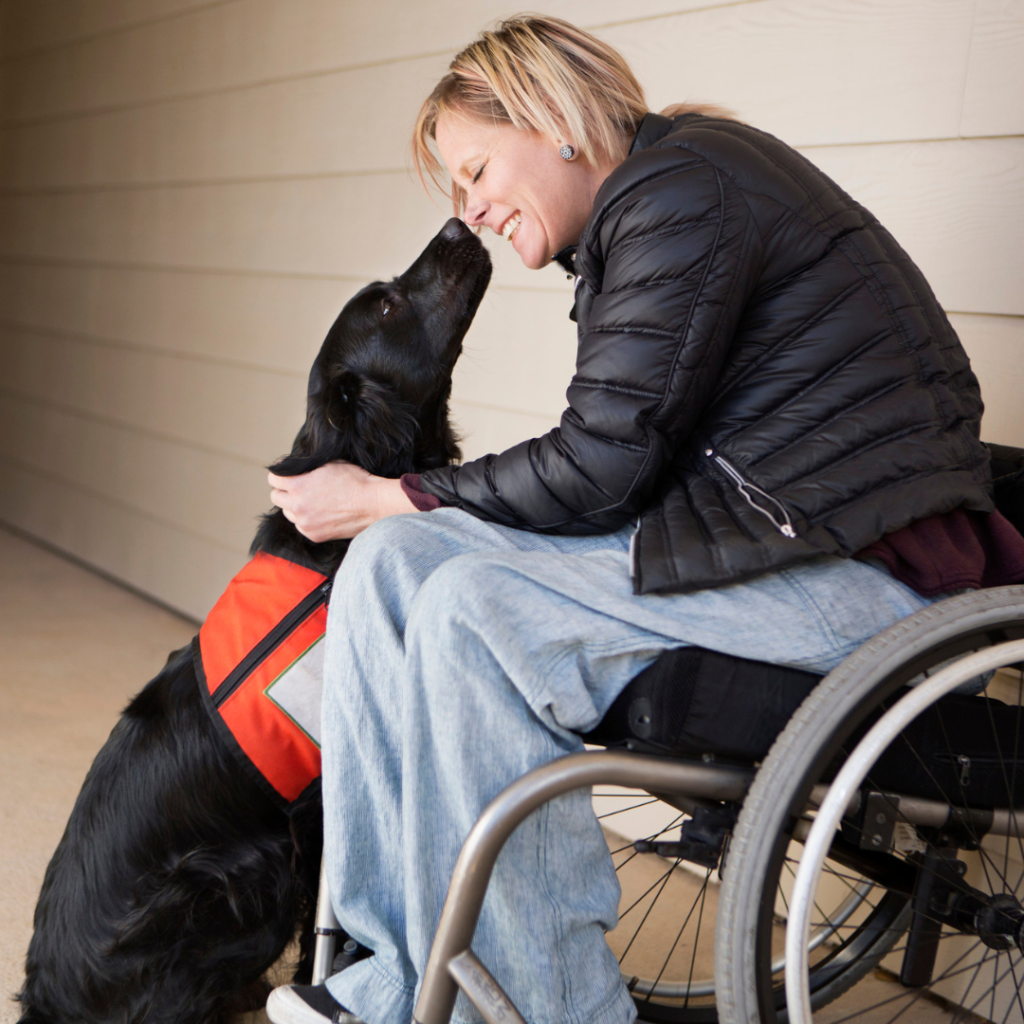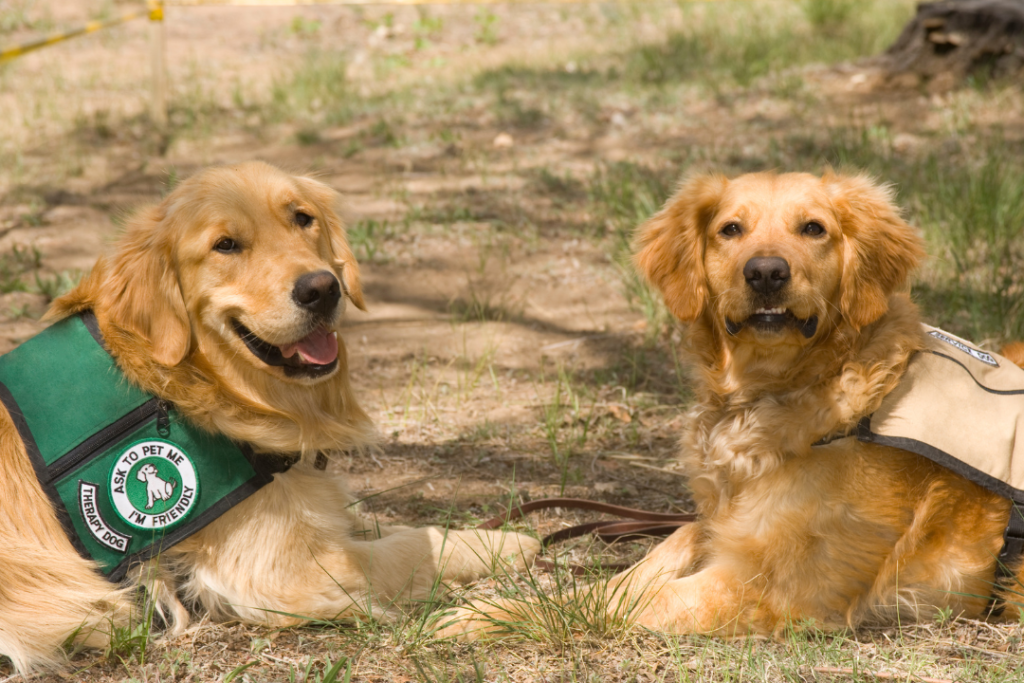Hello, passionate pooch lovers and dedicated dog owners! If you’re on the quest to transform your loyal companion into a certified service dog, you’re barking up the right tree! At CRT K9, we’re not just experts; we’re enthusiasts committed to guiding you paw-by-paw through this life-changing process. So, leash up; we’re about to embark on an enlightening journey!
From offering unspoken support on anxious nights to being the everyday heroes we need, service dogs are the unsung champions in many of our lives. They are the silent alarm bells, the furry medics, the vigilant guardians, and so much more. These paw-some companions make the world a more accessible and manageable place for individuals facing various challenges.
However, amidst the tail wags and heartwarming stories, there are numerous misconceptions about these four-legged wonders. Not every dog sporting a vest is a service dog, and not all disabilities are visible. Let’s unveil the truth and explore the empowering world of service dogs together!

Diving nose-first, it’s crucial to understand what sets service dogs apart. They’re not just pets; they are working animals trained specifically to assist with disabilities that may not always be apparent to the onlooker’s eye.
Under the Americans with Disabilities Act (ADA), service dogs have legal rights for public access that pet dogs do not. They’re allowed in various public places, from restaurants and museums to public transport and beyond, ensuring their handler’s right to live a fulfilled life.
Confusion often arises when distinguishing service dogs from emotional support animals (ESAs) and therapy dogs. While ESAs provide comfort through their presence, and therapy dogs offer temporary affection in therapeutic settings, service dogs are trained professionals in the canine world. They undertake specific tasks directly related to their handler’s disability, making everyday life paw-sible.
Before your dog can don the cape (or, more accurately, the vest), there are several considerations to address.
Firstly, your doggo must be in tiptop health and the appropriate age. Too young, and they lack the maturity for rigorous training. Too old, and they may not adapt as well or could face health struggles.
Not every loving pooch is cut out for service. Dogs who are easily distracted, aggressive, or overly timid might not make the best candidates. We’re searching for the Goldilocks of dogs – one whose temperament is just right!
On the human end, an official diagnosis of a disability by a healthcare professional is non-negotiable. This affirmation legitimizes the need for a service dog and sets the stage for the training tailored to specific needs.

Transforming your pupper into a disciplined service dog isn’t a walk in the dog park. It’s a commitment, demanding time, patience, and consistent effort.
Whether you enlist a professional dog trainer’s help or decide to train your dog yourself (or a mix of both), it’s important to weigh your options. Professional trainers bring experience and expertise but can be costly. Self-training demands a significant amount of time and immense dedication, and it’s vital to remain updated on the most effective training methods.
Your future service dog needs to master basic commands before graduating to more complex tasks. These foundational commands are crucial for maintaining control, especially in public settings.
Public access training takes these skills further, ensuring your dog can accompany you without being a public nuisance. This means no barking at other patrons, chasing after food, or succumbing to distractions.
Here’s where your dog’s training becomes specialized. Depending on your disability, they will need to perform certain tasks reliably. This could be anything from alerting to sounds if you’re deaf, guiding you if you’re visually impaired, or even fetching medication when needed.
Establish realistic expectations from the onset. Training doesn’t happen overnight. Typically, preparing a service dog can take anywhere from six months to two years of consistent practice. Remember, you’re building a working companion and a lifelong friendship!
The path to certification is less about paperwork and more about genuine, demonstrable skill.
While the ADA doesn’t explicitly mandate using a certified service dog, understanding its guidelines helps legitimize your service dog’s status. These rules protect your rights, ensuring your dog can accompany you in public domains.
It’s a common misconception that there’s an “official” certification or a universal database of service dogs — there isn’t. Instead, focus on gathering proof of training, which includes detailed logs of training sessions and any formal assessments your dog has passed.
During assessments, your dog must demonstrate that they can perform their duties without getting distracted and that they won’t be disruptive in public settings. It’s their time to shine and show off what makes them extraordinary!
In your pursuit, beware of fraudulent services promising official certification. Rely on credible, respected training professionals and organizations, and remember — a legitimate service dog’s credibility comes from their proven skills, not just a certificate.
Life post-certification isn’t just sunshine and tail wags; it comes with a set of responsibilities.
Service dogs are a testament to discipline and training excellence. It’s crucial to maintain these standards. Regular training sessions, even after certification, help keep your dog sharp and responsive.
Knowing your and your dog’s rights is paramount. Despite public access rights, you may encounter individuals unaware of these provisions. Calmly explaining your rights and, if necessary, showing proof of your dog’s training can help diffuse such situations.
Stay updated on any changes in legislation regarding service dogs. Also, some organizations and trainers recommend periodic re-assessments to ensure your service dog maintains high standards.
You’re now part of an expansive, supportive community. Reaching out to local and online service dog groups can offer invaluable support, empathy, and resources.
These groups can be fantastic platforms for sharing experiences, seeking advice, and even advocating service dog rights. They can become your go-to for recommendations on everything from trainers and gear to legal advice.
Educational resources are abundant. Workshops, webinars, and community events are excellent opportunities for continued learning. They keep you and your doggo ahead in the game, informed about policy changes, or new training techniques.
Your journey through service dog certification is one of growth, bonding, and immense reward. While challenging, the newfound independence and companionship you gain are beyond worthwhile.
Let’s strive for a world where service dogs are recognized, respected, and welcomed without hesitation. After all, they’re not just pets; they’re hardworking heroes with a life-changing mission.
At CRT K9, we believe every step you take with your service dog is a step towards freedom, understanding, and unconditional love. Here’s to the countless adventures ahead in your journey together!